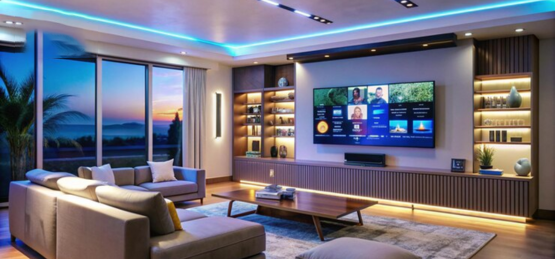
A well-lit outdoor space is a practical, safe, and helpful addition rather than just a decorative element for your home or business. Properly designed outdoor lighting may transform an average outdoor space into a visually appealing and secure environment for users.
This blog is primarily dedicated to outdoor lighting and its types, advantages, design considerations, and tips to assist you in lighting up your space.
Outdoor Lighting – Why is it Important?
Outdoor lighting serves several key purposes:
Outdoor Lighting Installations
Procedure to Build Your Lighting System for Outdoors
1. Formulate The Requirements
Clearly state the areas that need illumination and the reasons for doing so. Safety, security, or aesthetic reasons would be some of the cases that would be common. These could be paths, doors, gardens, terraces or driveways.
2. Use Layers of Lighting
This will encompass several lighting designs, that is, general lighting, focused or decorative lighting, and lighting that enhances specific activities. A typical example would be the use of pathway lights (task lighting) and string lights (ambient lights) as well as spotlights (accent lights).
3. Choose the Right Fixtures
Pick lighting fittings in a style appropriate for the interior design and for the purposes. Heavy materials such as stainless steel and aluminum are suitable for outdoor use.
4. Opt For Energy Efficiency
Make use of LED bulbs or solar systems to help utilize energy effectively and cut down on expenses. These alternatives are eco-conscious and more durable.
5. Make Sure to Position Them Appropriately
Anti-glare in the interior should be maintained by placing lamps properly so that no area has more light than the others or there are any harsh cut-off shadows. For example, it would be better to install pathway lights at fixed intervals along the path to ensure that the distribution of light is uniform along the path.
6. Respond to Automation
That is, it is recommended to install sensors, timers, or even smart controls in order to provide comfort and save energy. With automated systems, it ensures that your lights do not stay on even when they are not in use.
Some Important Factors Regarding Outdoor Lighting
Weather Resistance: Simply, select the required IP rating for outdoor lighting fixtures.
Glare Control: Glare control systems, including diffusers, shields or even weaker lamps should be applied.
Color Temperature: Warm white light measured in Kelvins in the range of 2700K – 3000K adds to the mood-settling areas, while performance areas will benefit from cool white light in the K range of 4000K – 5000 K.
Maintenance: When selecting elements for the interior it is advisable to prefer constructions of low maintenance and easy-cleaning lite fittings.
Budget: Prepare the funds that will be spent in a way that will accommodate quality and energy efficiency as well as aesthetic appeal.
Outdoor Lighting Trends
Ecological outdoor lighting fixtures are a great option for eco-friendly homeowners. LED lights eat up to eighty percent less energy than conventional bulbs and have a long life. Solar-powered alternatives cut out the usage of electric power. Moreover, the installation of timers and motion sensor systems minimizes excess power use.
An exterior that is well-lit improves the curb appeal and increases the safety and usability aspect of the given property. Therefore, it is understandable that prospective buyers will prefer residences that are fitted with such outdoor lighting design systems, hence, the expense is justifiable.
Outdoor Lighting Types by Usage and Functionality
1. Residential Spaces
Concentrate on achieving a cheerful and homely effect, whilst providing safety. In this scenario, pathway lights, wall scones, and fairy lights are applicable.
2. Commercial Programs
Safety and practicality are the primary issues. In these areas, flood and motion detection lighting, together with task lighting, is suitable for carparks, shop fronts, and al fresco dining areas.
3. Public Thoroughfares
Such arenas as parks, trails, and promenades employ inexpensive, low-maintenance, and power-efficient outdoor light solutions such as solar bollards and LED streetlights.
Tips for Installing Outdoor Light Fitting
Consider All Aspects First: Draw a design scheme and select light fixtures before the process commences.
Conclusion
The growing concern with beauty and the effective use of space has made it impossible to ignore the use of outdoor light fixtures in the present-day world. The steroids, the assorted peripherals and equipment, and the external design elements can achieve the necessary equilibrium and pleasing effect that can be found outdoors.
The introduction of LED fittings and solar-powered amenities has managed to escape these issues. For either commercial or residential premises, outdoor lighting will add beauty and convenience which in turn increases the value of the property.
Take time to enhance your exterior lighting design and bask in the warmth and coziness of the outdoors.
